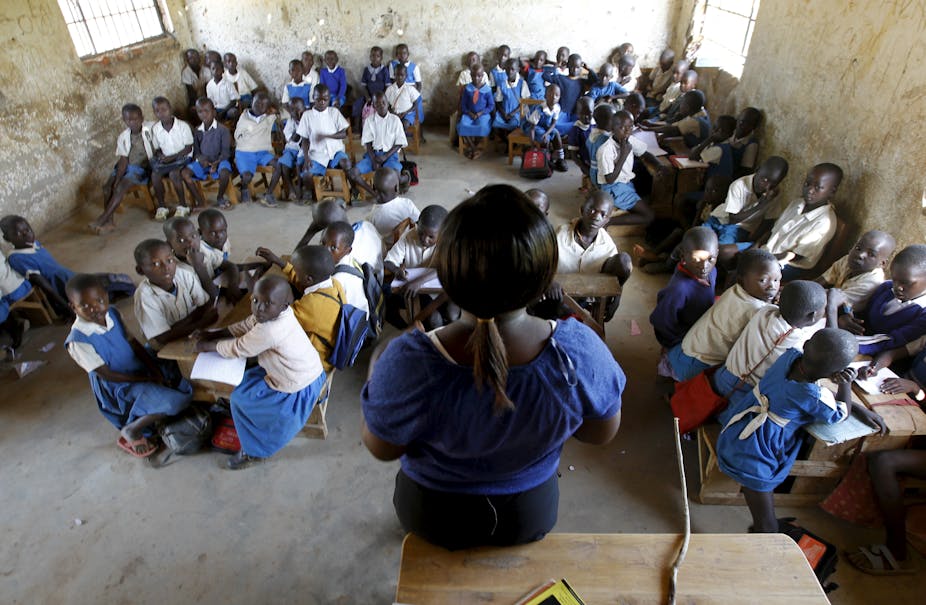In recent years, it has become common practice within post-conflict countries to introduce peace education or human rights courses into the school curricula.
After the 2007 violent elections in Kenya, for instance, a peace education course was introduced into the secondary school curriculum. This course aimed to mitigate ethnic tensions and increase inter-group tolerance among pupils.
Likewise, one year after the post-electoral crisis of 2010-2011, Côte d’Ivoire introduced a course titled ‘Citizenship and Human Rights Education’ into its school curricula. Similarly, in the Democratic Republic of Congo, the Civics and Moral course was revised in 2007 to include the topics of human rights and a culture of peace.
Peace education, or human rights courses, usually target pupils in primary and secondary education. They aim to teach pupils “peace” by familiarising them with multiple perspectives and by improving their inter-group attitudes. However, the success of these courses ultimately depends on how teachers implement them.
Unfortunately teachers in post-conflict situations may carry deep psychological scars and prejudices. Unless they are given the necessary support to deal with these issues they are unlikely to be effective in implementing a peace education course.
Lack of teacher training
It’s a sobering observation that in most post-conflict countries little to no teacher training is provided for teachers involved in the implementation of new peace education curricula. Besides a lack of planning and funding, a crucial factor that explains the lack of teacher training programmes is directly related to the implicit assumption that teachers are essentially agents of peace or neutral implementers of the curriculum.
Yet, most teachers live through violent conflicts like the rest of society. Teachers may therefore bear deep psychological scars and can have very biased or distorted views of their country’s history and causes of the conflict. Some of them may even have actively instigated inter-group divisions and violence.
Survey research, conducted as part of an ongoing research project at the University of Leuven’s Centre for Research on Peace and Development, confirms that teachers aren’t tabulae rasae – that they do have preconceived notions.
A survey conducted among 984 secondary school teachers in Abidjan, Côte d’Ivoire, was a good example of this. It showed that five years after the post-electoral crisis – which resulted in widespread violence between supporters of the current Ivorian President Alassane Ouattara and those of the former President Laurent Gbagbo – teachers remained sharply divided along ethno-religious lines. They differed strongly about the causes and the main culprits of the crisis.
Contentious history
Most post-conflict societies do not address their country’s violent past in the official curriculum. They fear it may incite renewed tensions and conflict because of disagreements over how and what kind of history should be taught. If the history of conflict is taught from multiple perspectives, however, it may improve inter-group understanding and empathy among future generations, and possibly prevent conflict recurrence.
Our research shows just how sensitive it is to develop and introduce new teaching materials on peace education and conflict histories. For example, while a majority of teachers in Côte d’Ivoire agreed that the history of the Ivorian conflict should be taught, most of them were reluctant to discuss their country’s violent past in the classroom. This was out of fear that it may open old wounds or create tensions in and outside the classroom.
Teachers have a lot of freedom to choose the parts of the curriculum they teach and how. For example, one Ivorian teacher we interviewed, took it on him to discuss the book Why I became a rebel from the former rebel leader and current President of the National Assembly, Guillaume Soro. The book is not part of the official curriculum. While in principle it is good to learn why Soro took up arms against the government, in the absence of any alternative perspectives it teaches pupils a one-sided account of history.
Teaching peace after conflict
Teachers are more likely to use this freedom when they hold strong views that collide with the official curriculum. This points to two fundamental aspects of teaching peace after conflict.
First, teachers need to be willing to implement the peace education curriculum. If they aren’t supportive of a course they may put it aside or choose to focus on parts that are most in line with their views.
Second, teachers should be encouraged to reflect on and challenge their own views of their country’s violent history. This includes their perceptions of opposing groups and former enemies.
By getting to know the views and history of previously opposing groups, teachers may acquire a better understanding of their own viewpoints and develop greater empathy. This becomes all the more important since the official curriculum should provide pupils with multiple perspectives on their country’s violent past.
It follows that teachers have to be taught “peace” themselves prior to teaching peace to their pupils. The peace education curriculum is more likely to contribute to building durable peace and establish a more tolerant society if there is an effort to discard the assumption that teachers are assumed to be agents of peace, and there’s a conscious effort to train them to play this role.

